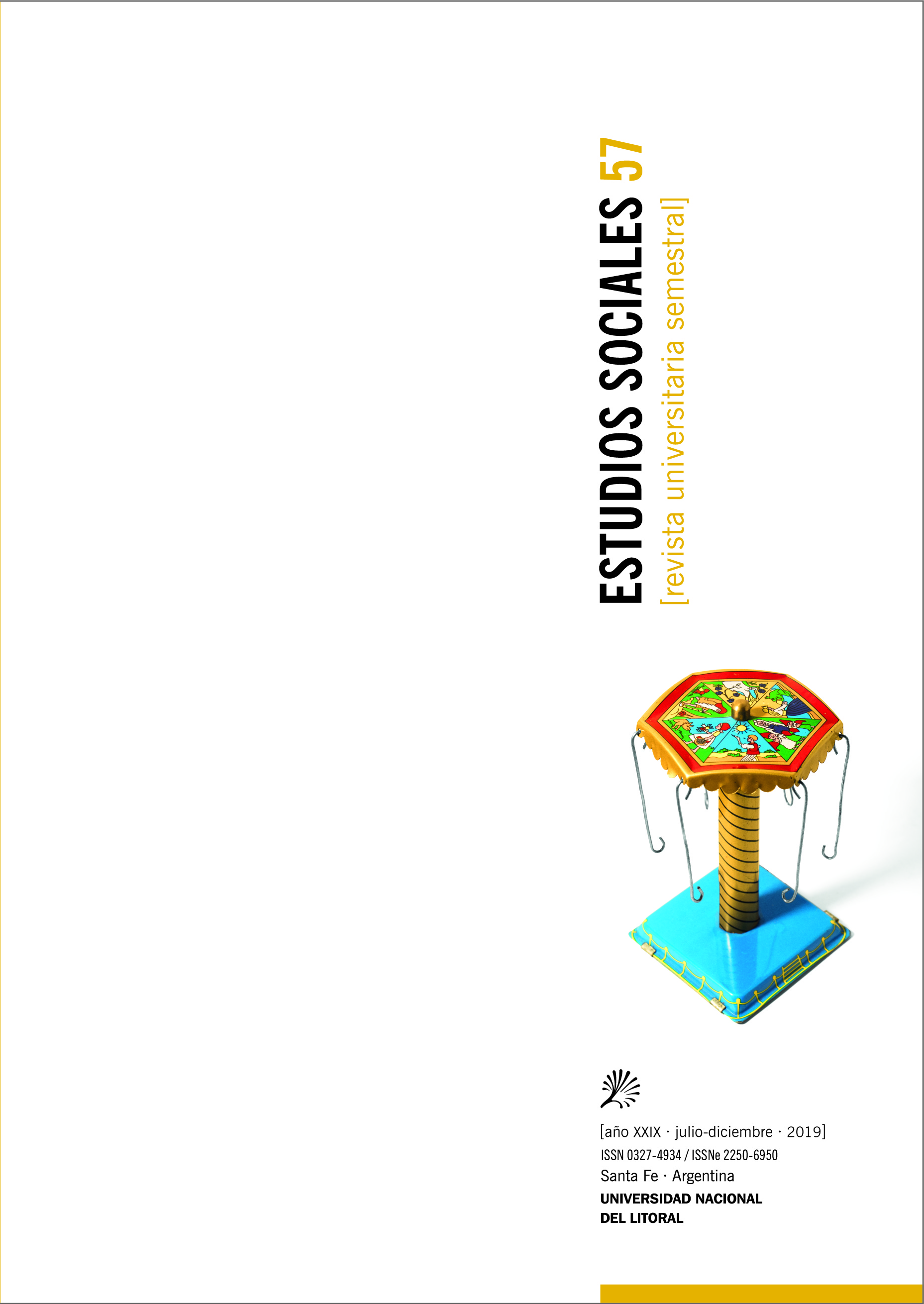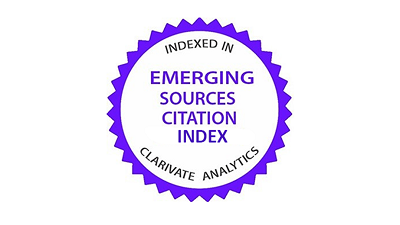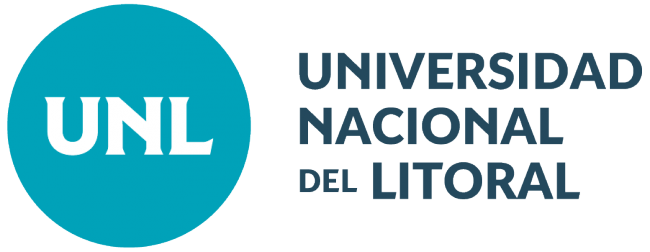The military civil triennium: Córdoba (1943-1946)
DOI:
https://doi.org/10.14409/es.v57i2.8364Keywords:
concentration of power, politica centralization, clericalism, peronismAbstract
This article offers a historiographic reconstruction of the period 1943-46 in the province of Córdoba, from an analytical perspective that contemplates four dimensions: the geographic centralization of authority in the National Executive Branch, its functional concentration in the Provincial Executive Branch, the practices of social control and the links of the State with the diverse actors of Cordoba society. Three hypotheses are explored in relation to these aspects. The first, refers to a double process of functional concentration of authority: in the national executive power to the detriment of provincial powers and in the provincial executive powers to the detriment of municipal governments. The second alludes to the ideological universe in which this process of concentration of political power was inscribed, marked by the pre-eminence of anti-liberal and authoritarian values. The third shows the systematic character of the repression, functional both to clericalism and to the nascent Peronism in their dispute for the control of the workers' movement.
References
BISCHOFF, EFRAIN (1979): Historia de Córdoba, Córdoba, Plus Ultra.
CAMAÑO SEMPRINI, REBECA (2014): Peronismo y poder municipal. De los orígenes al gobierno en Río Cuarto (Córdoba 1943-1955), Rosario, Prohistoria.
CHATELAIN, ESTEBAN (2018): El segundo golpe. Liberales, conservadores, nacionalistas, clericales y peronistas, en el marco del gobierno de la revolución de junio, 1943-1946, Tesis de Maestría en Partidos Políticos, Centro de Estudios Avanzados, Facultad de Ciencias Sociales, Córdoba, Universidad Nacional de Córdoba.
DEVOTO, FERNANDO (2014): «Para una reflexión en torno al golpe del 4 de junio de 1943», en: Estudios Sociales, nº 46, pp. 171-186.
DEL CAMPO, HUGO (1983): Sindicalismo y Peronismo, Buenos Aires, CLACSO.
GONZALEZ AGUIRRE, ANGELA (2001): «Grupos de poder en la región cordobesa. La familia Minetti, su actividad en la industria molinera, 1867-1920», en: Travesía, nº 5/6, pp. 233-248.
KABAT, MARINA (2016): «Torturadores peronistas», en: El Aromo, nº 89, Buenos Aires. Disponible en: https://razonyrevolucion.org/torturadores-peronistas-por-marina-kabat/ (último ingreso: 25/08/2019).
LUCIANI, MARÍA PAULA (2014): «La etapa formativa de la Secretaría de Trabajo y Previsión (1943-1946): primeros pasos organizativos y figuras relevantes», en: Anuario del Instituto de Historia Argentina, nº 14, pp. 1-16.
PIANETTO, OFELIA (1986): Sindicatos y política en Córdoba 1930-1946, Consejo de Investigaciones Científicas y Técnicas de Córdoba.
TCACH, CÉSAR (2015): «Entre la benevolencia y la sospecha: los actores políticos de Córdoba ante el golpe de 1943 y el fin de la experiencia sabattinista», en: Avances del CESOR, nº 13, pp. 41-52.
TCACH, CÉSAR y REYES, CARMEN (1986): Clandestinidad y Exilio. Reorganización del sindicato socialista 1939-1953, Ed. Pablo Iglesias, Madrid.
TORRE, JUAN CARLOS (1990): La vieja guardia sindical y Perón, Buenos Aires, Sudamericana.
ZANATTA, LORIS (1996): Del Estado Liberal a la Nación Católica, Buenos Aires, Universidad Nacional de Quilmes.
Downloads
Published
How to Cite
Issue
Section
License
Los artículos publicados en Estudios Sociales. Revista Universitaria Semestral se encuentran disponibles gratuitamente en la Biblioteca Virtual de Publicaciones Periódicas de la Universidad Nacional del Litoral: http://bibliotecavirtual.unl.edu.ar/publicaciones.
El contenido está bajo Licencia Creative Commons Atribución-NoComercial-Compartir Igual 4.0 Internacional (BY-NC-SA): no se permite un uso comercial de la obra original ni de las posibles obras derivadas, la distribución de las cuales se debe hacer con una licencia igual a la que regula la obra original.
 Los artículos que sean aceptados, deberán ser acompañados del documento "Autorización para Publicar" que contiene la firma de los autores, en donde se acepta la originalidad del documento y autorizan a la Revista a la publicación del mismo. Las opiniones vertidas por los autores en sus artículos no reflejan necesariamente el parecer de Estudios Sociales. Revista Universitaria Semestral. El contenido de cada trabajo es responsabilidad exclusiva de su autor. En caso de que se utilicen trabajos, datos y/o palabras de otros autores, éstos tienen que ser debidamente citados. Cualquier contenido que sea detectado como fraudulento será elevado al Consejo Editorial de la revista para su revisión, quienes evaluarán el caso y determinarán los pasos a seguir.
Los artículos que sean aceptados, deberán ser acompañados del documento "Autorización para Publicar" que contiene la firma de los autores, en donde se acepta la originalidad del documento y autorizan a la Revista a la publicación del mismo. Las opiniones vertidas por los autores en sus artículos no reflejan necesariamente el parecer de Estudios Sociales. Revista Universitaria Semestral. El contenido de cada trabajo es responsabilidad exclusiva de su autor. En caso de que se utilicen trabajos, datos y/o palabras de otros autores, éstos tienen que ser debidamente citados. Cualquier contenido que sea detectado como fraudulento será elevado al Consejo Editorial de la revista para su revisión, quienes evaluarán el caso y determinarán los pasos a seguir.
Estudios Sociales. Revista Universitaria Semestral adhiere al Código de Conducta y Guía de Buenas Prácticas para editores científicos del Comité de Ética de Publicaciones (COPE):http://publicationethics.org/














